
Dream Nepal - World Tours

- 07 / 06
- Kathmandu - Nagarkot - Pokhara
- World Tours
Overview
Nepal is one of the richest countries in the world in terms of bio- diversity due to its unique geographical position and altitudinal variation. From the highest mountain in the world to dense forests that are home to a rich and wide variety of wildlife and fauna, within this spectacular geography is also one of the richest cultural landscapes anywhere. Nepal is also home to a rich cultural heritage and it offers an astonishing diversity of sightseeing attractions and adventure opportunities found nowhere else on earth. A visit to Nepal is not only about discovering a new destination but also building new friendships and lasting memories from the Nepal Himalaya.
Day 1 (Arrival) Kathmandu
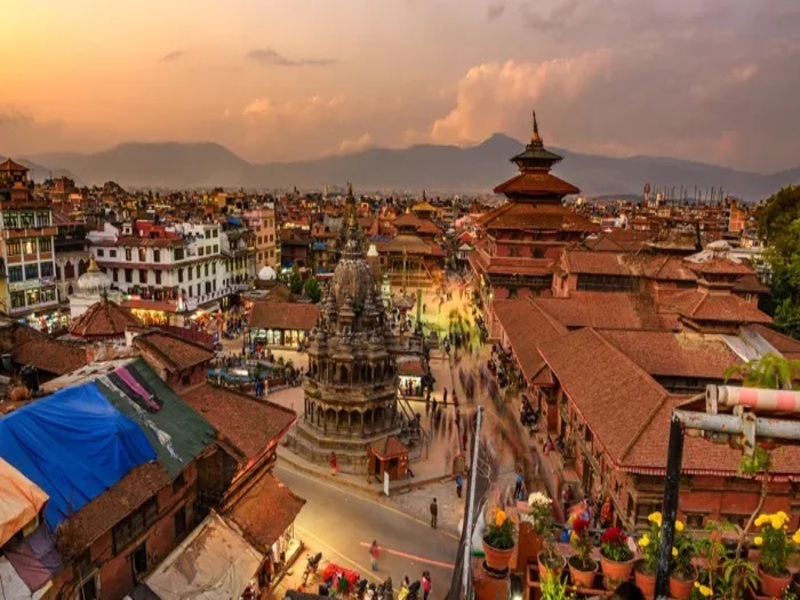
On Arrival at Tribhuvan International Airport in Kathmandu,our representative will meet assist and transfer you to the hotel.
Overnight stay at the hotel.
Day 2 Nagarkot via Bhaktapur
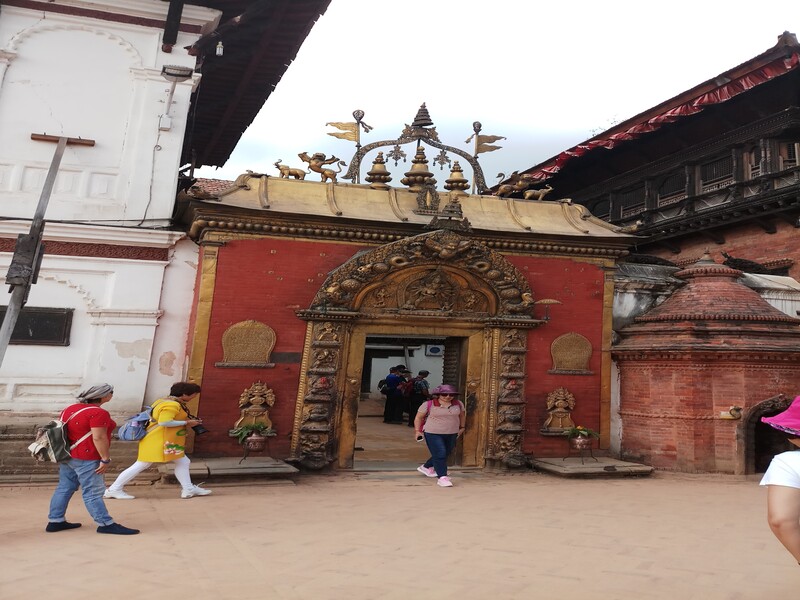
After breakfast, you will visit the city of Bhaktapur, the best restored of the mediaeval royal cities of the valley. The sightseeing tour comprises the famous “Golden Gate”, “Palace of 55 Windows” and the “Nyatapola Temple” the valley’s tallest.
Later we drive to Nagarkot for open and fine climate and environment in hillside of Nagarkot on the altitude of 7200 ft.
Golden Gate : Being the most rich and splendid specimen of its kind, the Golden Gate is considered the pride of Bhaktapur. The door of this astounding monument is of immense historical, religious, and archaeological importance and is decked with several mythical creatures including some mysterious monsters. Built by Monarch Ranjit Malla, the Golden Gate stands at the main courtyard entrance of the fifty-five-window palace found in Bhaktapur Durbar Square.
Palace of 55 windows:This magnificent Palace was built during the reign of King Yaksha Malla in 1427 A.D., and was subsequently remodelled by King Bhupatindra Malla in the seventeenth century. Among the brick walls, with their gracious setting and sculptural design, is a balcony of fifty-five windows, considered to be a unique masterpiece of woodcarving.
Over night at the hotel in Nagarkot.
Day 3 Nagarkot to Pokhara
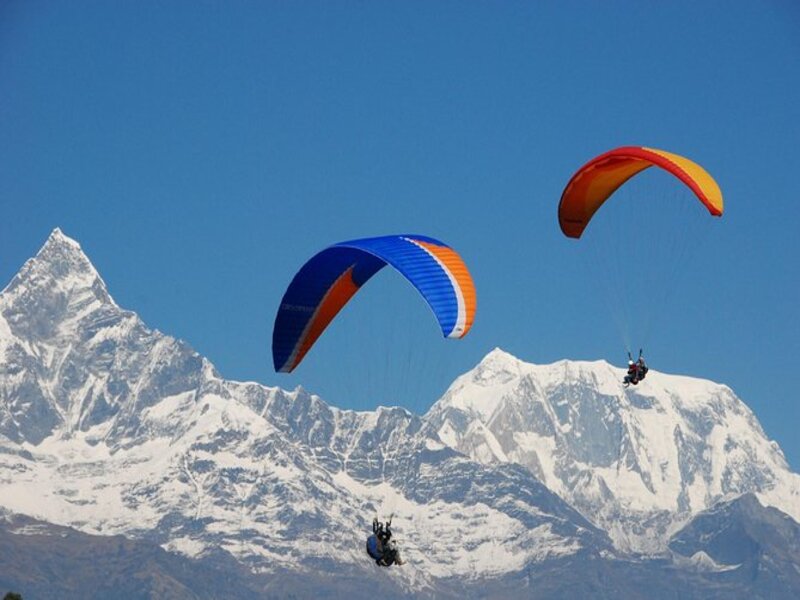
After morning sunrise view and breakfast, drive to Pokhara offering panoramic Himalayan views, the lakeside town and Nepal's second most important tourist destination after Kathmandu. We arrive after a drive of 6.30 hours and check in at hotel.
Rest of the afternoon for relaxation at the hotel.
Pokhara : Pokhara is the third largest city of Nepal with approximately 250,000 inhabitants and is situated about 200 km west of the capital Kathmandu.It is the second most populous city in Nepal and also serves as the headquarters of Kaski District, Gandaki Zone and the Western Development Region. Pokhara is one of the most popular tourist destinations in Nepal.
Overnight stay at Hotel.
Day 4 Pokhara
.jpg)
After breakfast, commence in the morning from the hotel to Full Day sight seeing of Pokhara Valley. It includes Mahendra Cave, Vindyavashini Temple, Davis Fall and Gupteswor Mahadeva Cave. A pleasant boat ride on Lake Fewa.
Day 5 Pokhara to Kathmandu
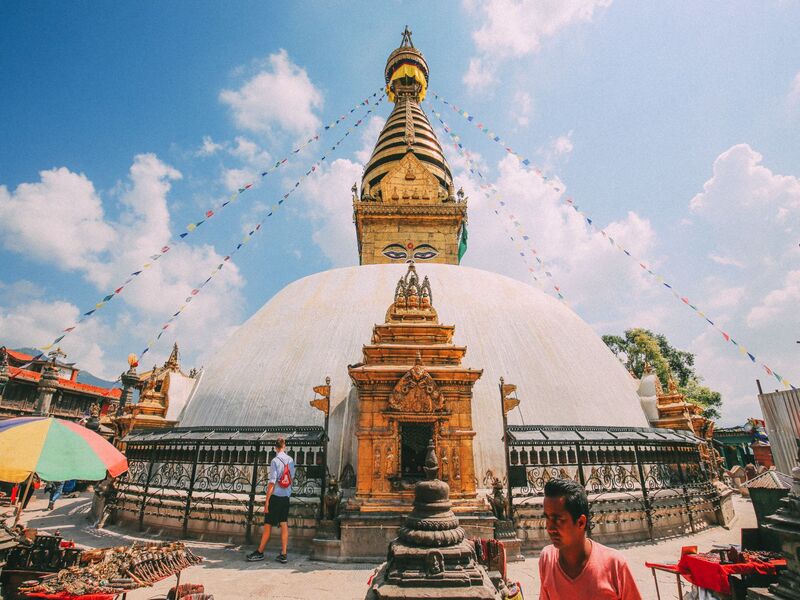
After breakfast drive back to Kathmandu. On arrival check in at the hotel. In the afternoon we take you for a sightseeing tour of Kathmandu Old city, including Kumari Temple, Hanuman Dhoka Palace and Kasthamandap. We then proceed to Swoyambhunath Stupa. (This service depends on the timing of arrival in kathmandu or can be done before departure if time allows).
Kumari Temple:Kumari, or Kumari Devi, is the tradition of worshiping young pre-pubescent girls as manifestations of the divine female energy or devi in Hindu religious traditions. The word Kumari, derived from Sanskrit Kaumarya meaning "virgin", means young unmarried girls in Nepali and some Indian languages and is a name of the goddess Durga as a child.
Hanuman Dhoka:It is a complex of structures with the Royal Palace of the Malla kings and also of the Shah dynasty in the Durbar Square of central Kathmandu, Nepal. It is spread over five acres. The eastern wing with ten courtyards is the oldest part dated to the mid 16th century. It was expanded by King Pratap Malla in the 17th century with many temples. The stone inscription outside is in fifteen languages and legend states that if all the 15 are read milk would spring from the middle of stone tablet.
Kasthamandap: Kasthamandap is a three-storied temple situated in Maru tole of Kathmandu. It is one of the largest and most noted pagodas of Nepal. The pagoda enshrines a statue of Gorakhnath. This temple is built in pagoda style design. It was built in the early sixteenth century by King Laxmi Narsingha Malla. The whole temple is built from just wood of a single tree, and covered with the shrine. The name of capital city is named after this temple.
Swoyambhunath Stupa: Swoyambhunath literally means 'Self-Existent One.' Swoyambhunath is believed to have been established more than 2,500 years ago. An inscription dated 460 A.D. states that the construction was carried out by King Mandeva. By the thirteenth century Swoyambhunath had developed into an important Buddhist learning site. Legend has it that Swoyambhu was born out of a lotus flower that bloomed in the middle of the lake which the Kathmandu valley once was. The largest image of the Sakyamuni Buddha in Nepal was recently built on the western boundary of Swoyambhu. Behind the hilltop is a temple dedicated to Manjusri or Saraswati - the Goddess of learning. Chaityas, statues and shrines of Buddhist and Hindu deities fill the stupa complex. The base of the hill is almost entirely surrounded by prayer wheels that were recently installed. Devotees can be seen circumambulating the stupa at all times.
Overnight at the hotel.
Day 6 Kathmandu
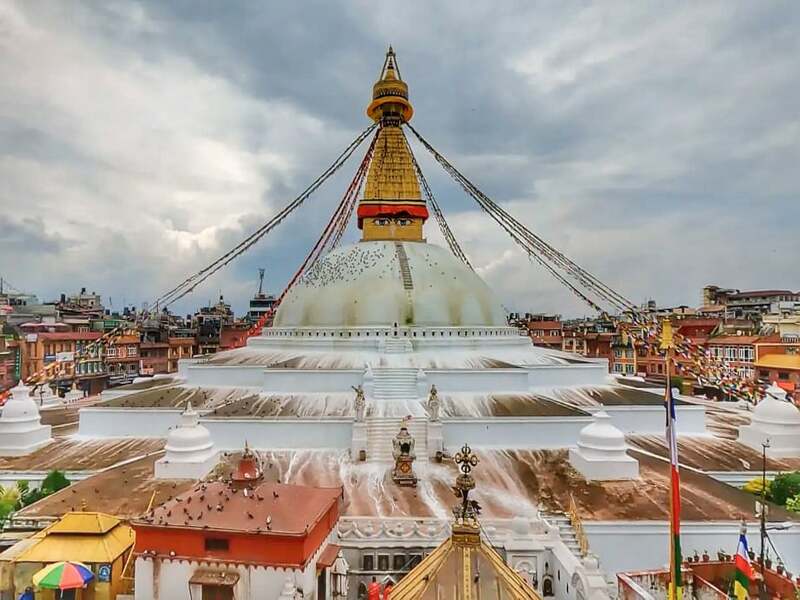
After breakfast full day tour of Kathmandu Valley. You will visit Patan City, the medieval Malla era city of arts & crafts. The city boasts Hindu temples and Buddhist monasteries and Royal Palaces from the medieval Malla period.
Pashupatinath Temple: Pashupatinath Temple is one of the holiest Hindu shrines in the world. The temple is dedicated to Lord Shiva and is built in the familiar Pagoda style. Chronicles indicate the temple’s existence prior to 400 A.D. This holy place is picturesque collection of temples and shrines. All the dying persons are brought to Pashupatinath for cremation. Only the Hindus are allowed to go inside. It is one of the most important Shiva temples on the subcontinent and draws numerous devotees from all over India each year.
Boudhanath Stupa: Boudhanath Stupa is the world’s biggest stupa located about 8 kilometers from the city center. This colossal Stupa is known by the name of Boudhanath, the god of wisdom. It is difficult to assign a period to it, as some believe that it was built during the reign of either Shiva Dev or Anshu Verma in the 7th century A.D. Boudhanath attracts the Buddhist pilgrims from all over the world.
Overnight at the Hotel.
Day 7 Departure from Kathmandu
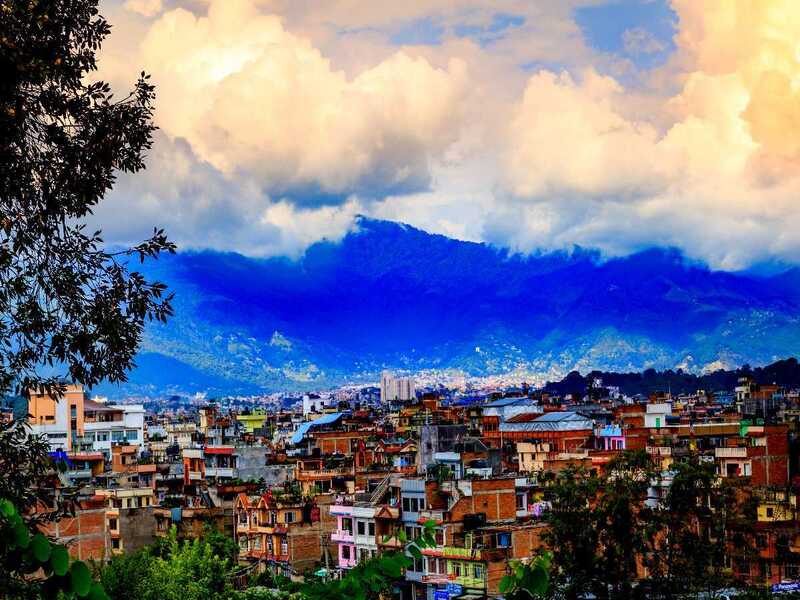
After breakfast, check out from the hotel and drive to international airport for departure flight.



